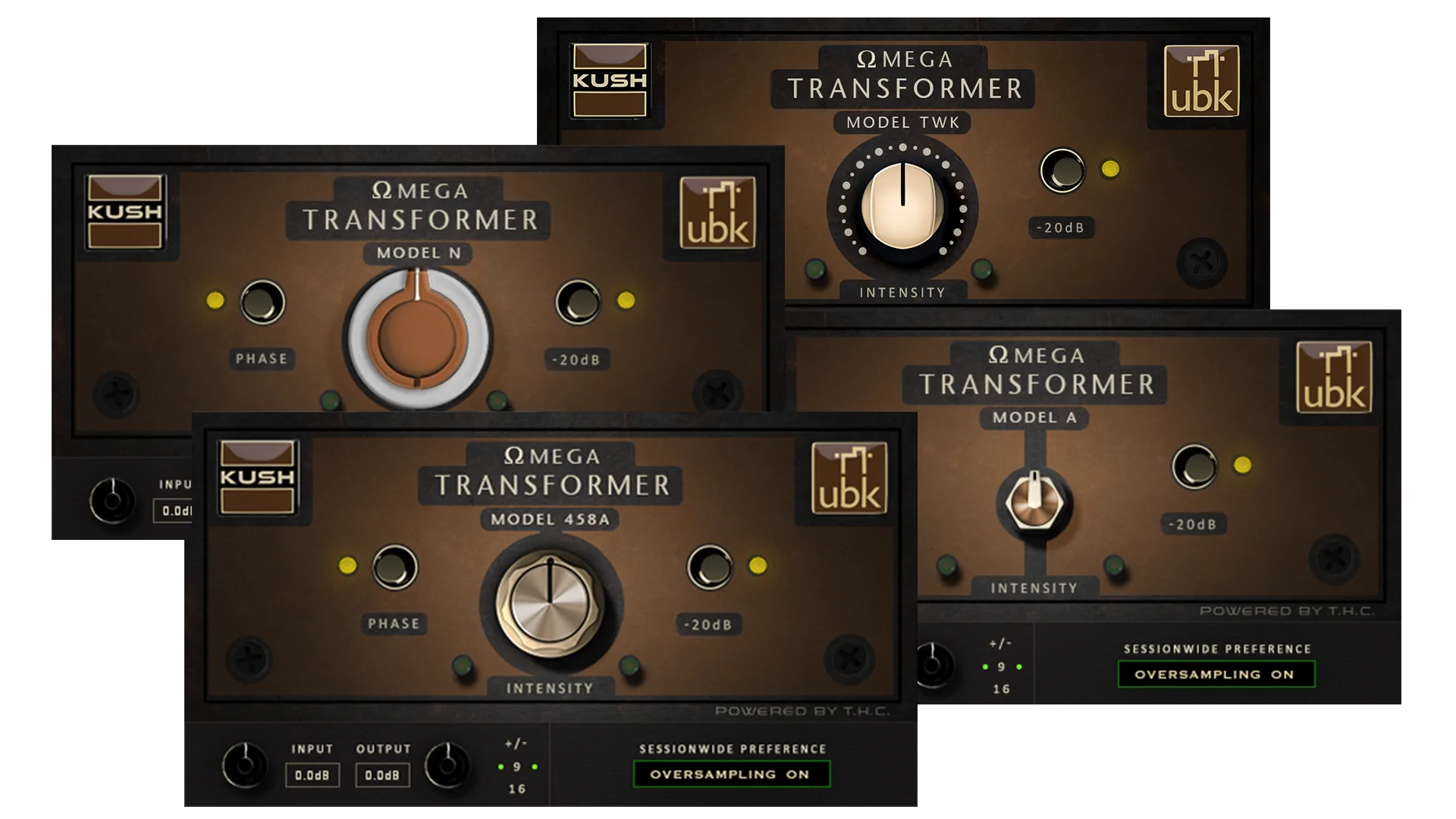Omega 4-Pack Saturation toolkit. It’s no secret that the average audio engineer spends most of their lives chasing the perfect saturation plug-in. There are so many options and they all do such wildly different things. Kush converter plugins are designed to provide a wide sonic saturation palette that covers popular analog colors from Neve, API, Altec and Kush.
MODEL 458A:
This sparse tube emulation has a fat tone that decays delightfully, becoming progressively harder but never harsh, turning copper cymbals to gold and gluing the bass into a molten fiery clot of love. Pairs perfectly with the Omega mic preamp.
MODEL N AND MODEL A:
The Model N is designed to add harmonic character and dimension to any track. It’s the perfect choice for spicing up harmonic content and rounding off harsh digital transients for a more punchy and lively sound – just as if your sounds were running through a hardware processor with customizable output transformers.
Add new sonic color to tracks recorded with your Omega preamp module with the Kush Audio Omega Transformer Model A plugin — or use it on its own to add analog vibrancy to tracks in your DAW. Kush Audio’s Transformer plugins emulate the harmonic richness and punchy, compressed sound of vintage hardware transformers.
MODEL TWK:
Model TWK is vintage distortion taken straight from Kush Tweaker’s own hardware compressor. The Omega TWK’s sound comes from a simulation of the Tweaker driving a pair of “superior transistors” powering a long string of dirty ’70s op-amps, all of which have characteristics that would be considered awful by today’s standards.
The effect of lightly polishing each of the Tweaker’s gentle clipping steps in the series is a smooth, dense and slightly dark saturation. Because of this, the TWK model (like the Tweaker itself) goes from “soft and sweet” to “angry and harsh” and everything in between.
Functions
Simple and easy:
All 4 plugins have the same control layout. It’s as simple and intuitive as it gets. They have one big knob called “Intensity” right in the middle, two buttons on the sides – one for the -20dB pad and the other for switching the phase. At the bottom there is an input and output trimming section and one large oversampling toggle button. That’s all! There is nothing more to see here.
The only thing that changes for different models is the design of the intensity control in the middle. This changes to reflect each of the transformer models that the plugin is based on. They all feature the signature brown steampunk UI design that Kush has become known for, and they look really good in your mix window.
Color the city crunchy!
They are all similar, but do they sound the same? Well, they kind of do, but they’re also really different. Let me explain – they all have the signature Kush sound. Anyone who has used a Kush plug-in or hardware will be familiar with this sonic signature, especially in the creamy low-mids and slightly crunchy upper-mids. However, different models can be used to create amazingly varied textures in your mix. They all have different flavors they impart, and depending on how hard you push the “intensity” knob, you can get very different results.
Just a phase
The phase switch button on them is what Greg talks about in detail. In short, reverse the phase and see what color of sound you like and leave it at that. The -20db pad button is great when you want to add an incredible amount of saturation to your signal, not just for loud sources. Indeed, very inventive.
Remember how Chad Blake runs each of his audio tracks through the Pro Tools Sans Amp plugin to break the sound into stages? These plugins do just that, much easier and sound fantastic. Nothing comes as close to saturation as Kush does, as their whole company and ethos is based on how analog gear saturates. It also begs the question of how good they can be paired with their Omega preamp when the plug-ins themselves are THAT good.
The only downside to these plug-ins is that the level jumps as soon as you activate them, and you have to fiddle with the input and output knobs to match the signal level for comparison.




